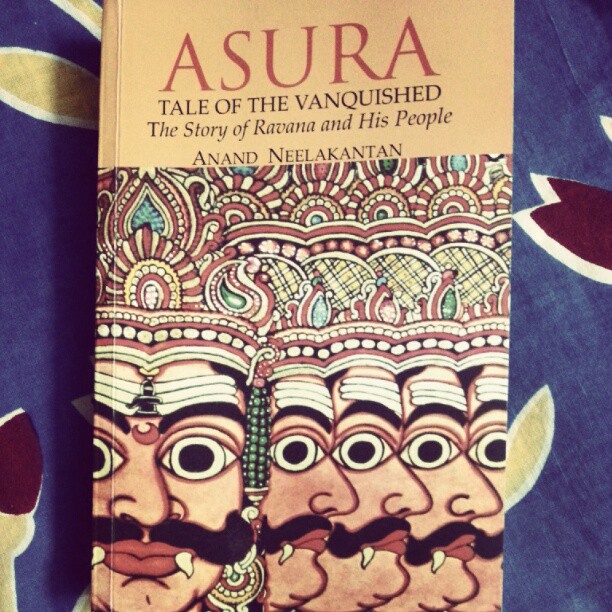Anand Neelakantan
Asura is partly a Ravana perspective on where his life intersects with that of Rama, (and thus Ramayana) and partly a social commentary of his life and times. (how society treats women, the caste system etc) The tale is narrated by Bhadra, an asura who fought under Mahabali and several others before becoming a recurring (and key) figure in Ravana’s life from the time he led a ragged army against Kubera. The narrative begins with Ravana’s last moments, as he lay dying on the battlefield.
Predictably, the book shows Ravana in a good light, whose only fault was that he defied the prevalent societal norms and lived life on his own terms, as opposed to Rama, who was deified by the higher castes and made into an ideal image. For all we know, this is probably true, since history is after all, written by victors.
While most of the story is essentially known, the author deserves credit for demystifying the myth – from the big picture details of which region was ruled by which king to smaller details like Pushpak as a flying machine prototype and Jatayu becoming a bird that got caught in its rotors. This does require that he has to gloss over some of the events, but that’s easily something we could forgive because the author largely keeps it true to the original tale. Varuna as a pirate, Kubera as the merchant king, Yama as the drug lord, various Indras, are all superb renditions of familiar mythological characters. There’s some intelligent use of Bhadra in the final events, and the author leaves ample clues for the reader to predict it. The author tries to show that in many ways, things have remained unchanged – the generation gap between Bali/Angada and Ravana/Meghanada is a classic example, and this is something that gives the narrative a lot of credibility. (+5 points for the Jabali mention)
But I did feel that it could have been edited better. Bhadra’s character, though used well to show how the life of a common man changed, or remained unchanged as the ruling class switched, is prone to long winded discourses which slackens the pace. The working of Ravana’s mind too becomes preachy once in a while, but thankfully not too often. If I had to nitpick, I’d say that mistaking navel for naval while describing a woman’s anatomy is not a sign of good proofreading. (-5 points for not connecting Chandrahasa to Shiva and relegating it to a blacksmith origin)
But in essence, it is a fresh take, and was good enough for me to visualise how it really must have been – as something that really happened, and not just a myth.


Leave a Reply